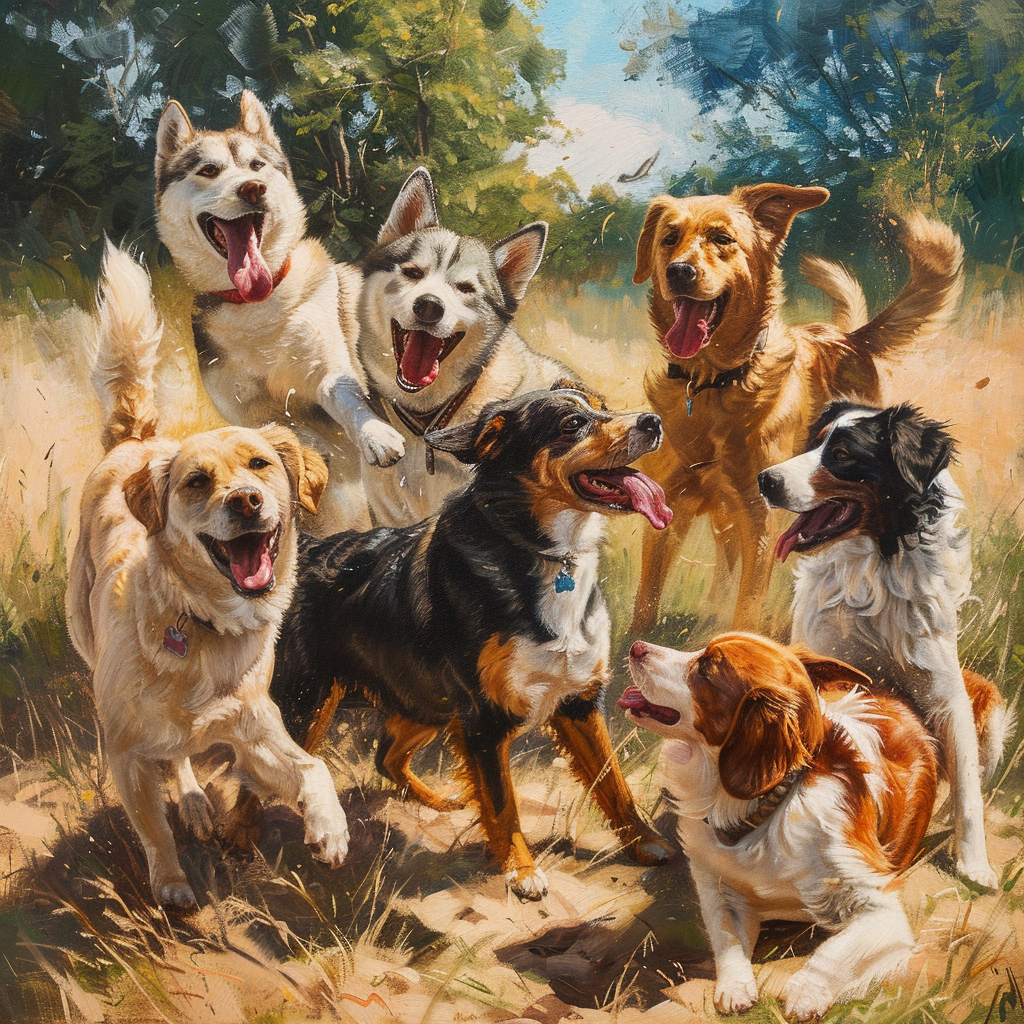The Old English Sheepdog is an iconic dog breed, best known for its shaggy coat and distinctive “bear-like” gait.
Originating from England, these friendly giants were historically used for herding sheep and cattle, which is how they earned their name. They are recognizable by their profuse, weather-resistant coat and their typically docked tails, leading to the affectionate nickname “Bobtail.”
One of the most charming aspects of the Old English Sheepdog is its good-natured temperament. Despite its size, this breed is known for a gentle and adaptable disposition, making it suitable for families and singles alike.
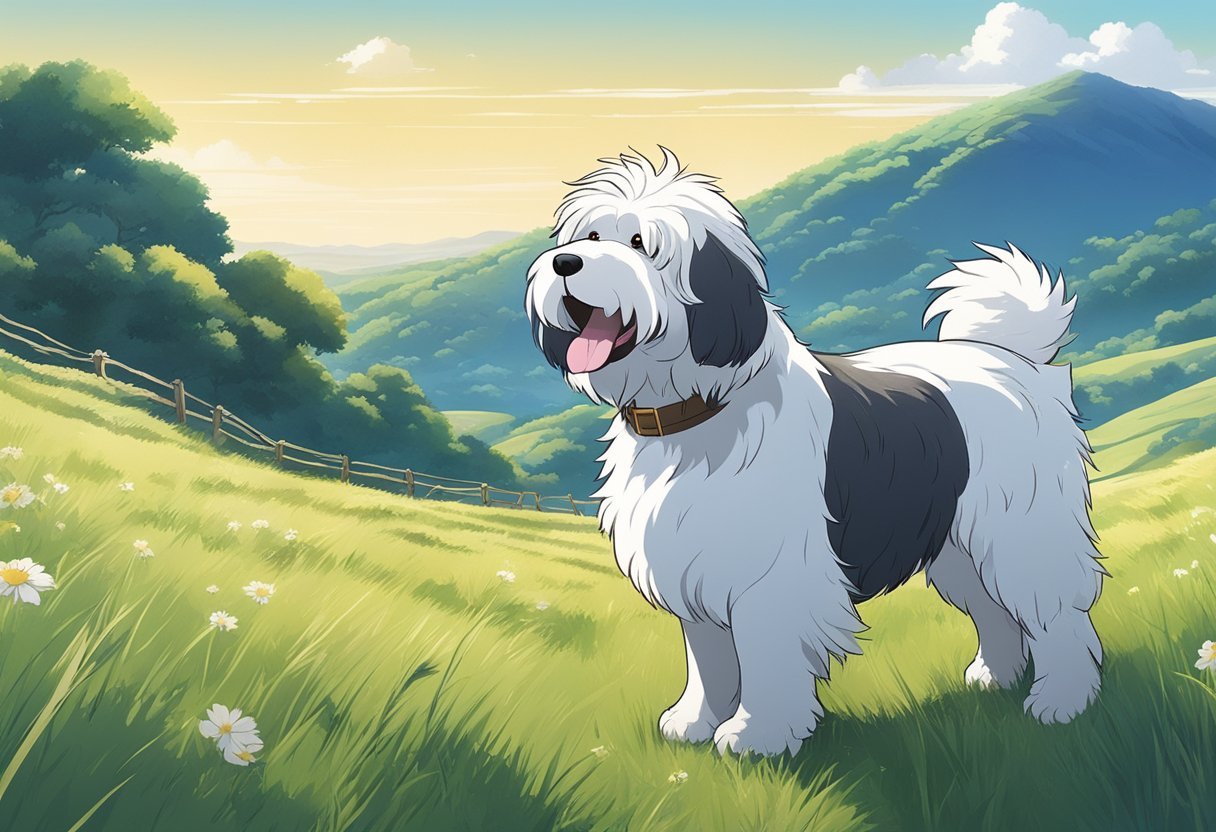
Key Takeaways
- History: Originating in England for herding, the Old English Sheepdog’s features and behaviors are shaped by its role in driving livestock.
- Family-Friendly: Known for its gentle and adaptable nature, the Old English Sheepdog is an excellent companion for families and singles, thriving on interaction.
- Grooming and Health: The breed requires regular grooming and exercise, and potential owners should be mindful of breed-specific health issues.
- Distinctive Traits: With a bear-like gait and a thick double coat in various colors, the breed’s herding instincts can manifest in household herding behaviors.
History and Origin
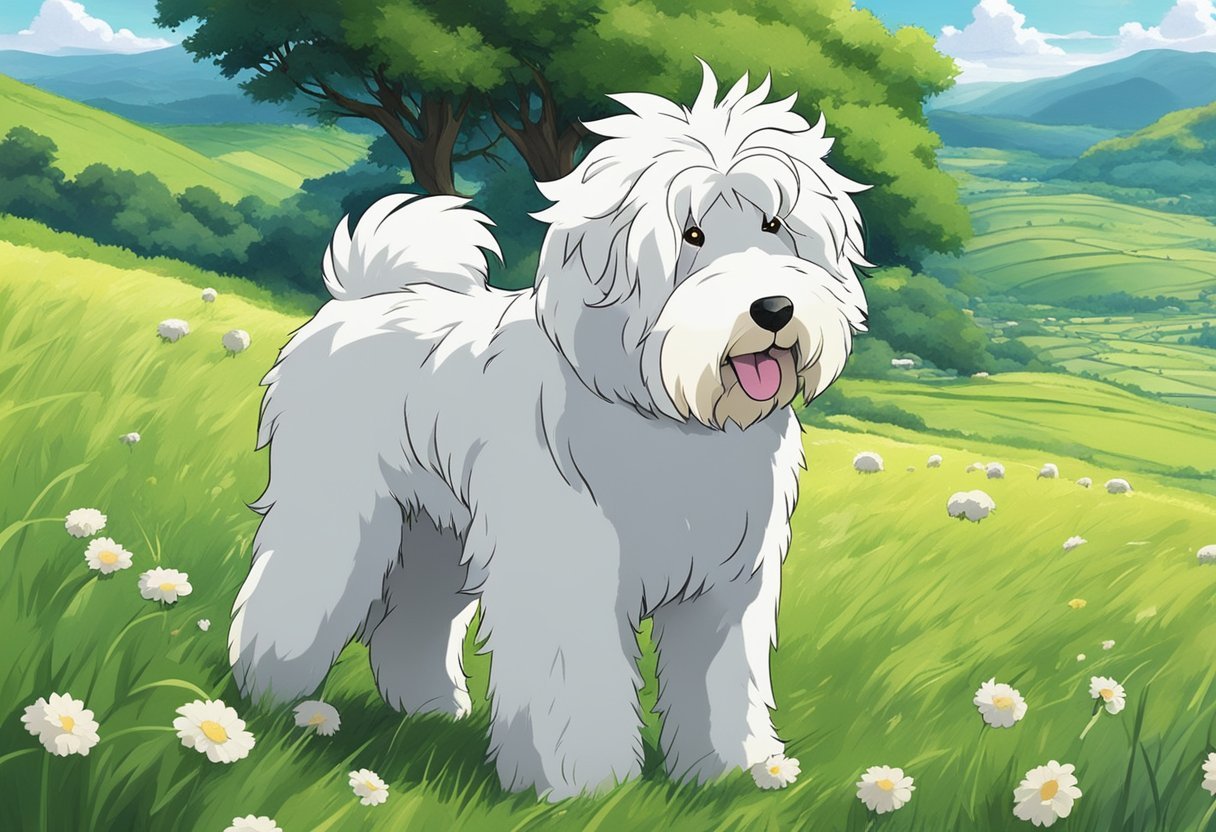
When you’re delving into the Old English Sheepdog, you’re peering into a rich history that intertwines closely with England’s pastoral lifestyle.
At its core, the Old English Sheepdog originates as a herding breed, prized by drovers for its ability to herd and drive cattle and sheep.
Development of the Breed
The Old English Sheepdog can be traced back to the early 19th century in the rural landscapes of Southwestern England. While its exact lineage is a bit hazy, it’s believed that the breed was crafted from a mix of strong European herding breeds.
These dogs were bred for their durability, herding skills, and the unique bobtail—a trait that farmers valued, as it was a clear indicator the dog was a working breed, which offered tax exemptions.
Over time, the breed evolved not just in physique—with its shaggy coat and distinctive gait—but also in reputation, from a farmer’s companion to a recognized breed by the Kennel Club in England.
Old English Sheepdog in England
In its home country, England, the Old English Sheepdog’s history is deeply tied to its role as a drover’s dog. It would help drive cattle and sheep to market, navigating the rough English countryside with ease.
These dogs were robust and intelligent, equipped with a thick coat to protect them from the harsh weather.
Your Old English Sheepdog’s ancestors were so good at their job that they became an invaluable part of the pastoral economy in England. With their friendly and adaptable nature, they quickly found their way into the hearts of the English and later, dog lovers around the world.
On a fun note, Prince Eric’s dog Max in Disney’s the Little Mermaid, was of this breed.
Physical Characteristics
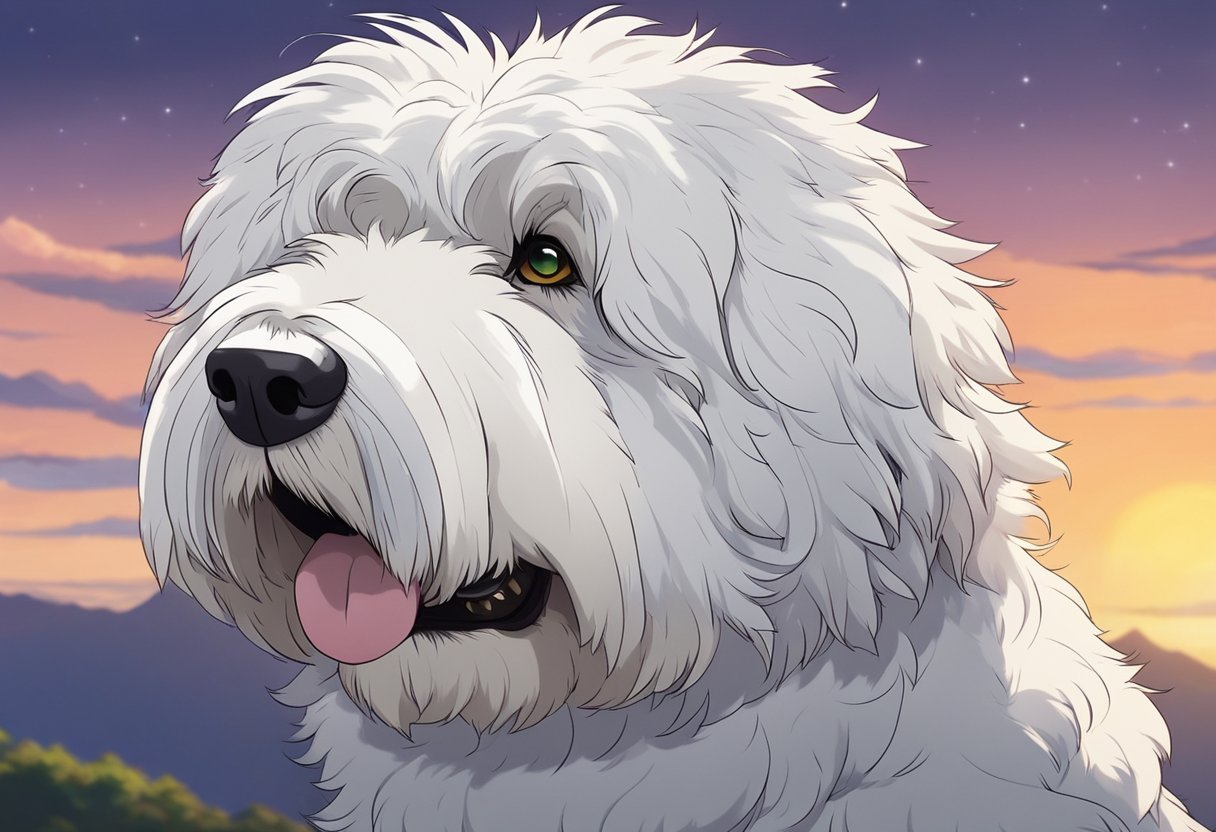
When you meet an Old English Sheepdog, you’ll be immediately struck by their plush and distinctive appearance which is as functional as it is charming.
Coat and Coloring
These pups sports a double coat that is both shaggy and abundant, providing insulation and protection.
The outer coat is textured and may come in a variety of shades, including blue, grizzle, and blue merle, often mixed with white.
This breed’s fur not only adds to its endearing appearance but also requires regular grooming to remain tangle-free.
Size and Weight
Your dog’s size and weight are indicative of their strength and agility.
Adult males typically stand at about 22 inches or more at the shoulder, whereas females might be slightly smaller.
This breed has a robust body and well-sprung ribs, weighing anywhere from 60 to 100 pounds.
Distinctive Features
The characteristic bobtail is one of the most recognizable features, where the tail is naturally short, or docked, to avoid tangles.
Their head carries a sweet expression hidden beneath the trademark “peak-a-boo hairdo,” and their ears lie flat to the side.
Not just a pretty face, every aspect of their build contributes to a bear-like gait that hints at the breed’s herding lineage.
Temperament and Behavior
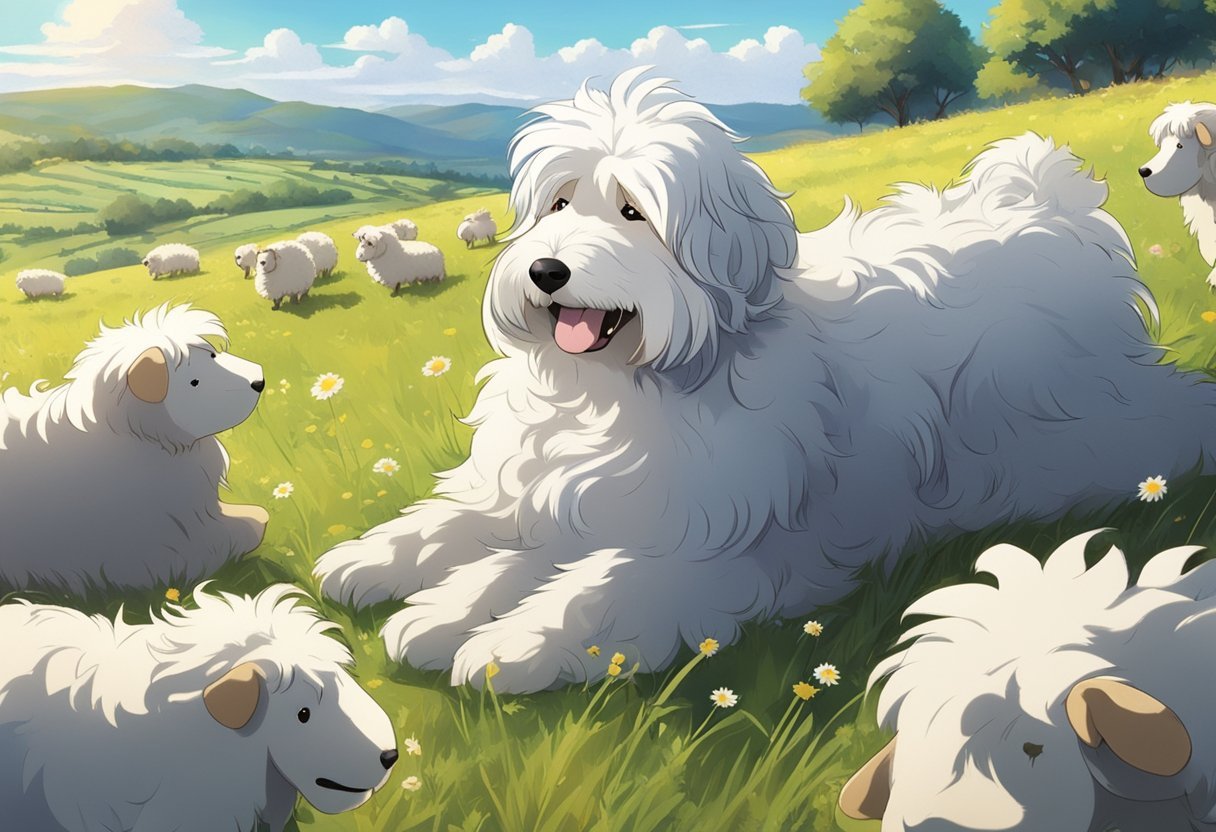
When you bring an Old English Sheepdog into your life, you’re getting a companion known for their affectionate and intelligent nature. These dogs shine with a loving personality that’s both gentle and protective, making them a delightful addition to many families.
Personality Traits
These puppers are likely to display a range of endearing personality traits. They are renowned for their:
- Affection: These dogs form strong bonds and are often very loving towards their owners.
- Intelligence: Training can be a joy due to their quick-wittedness, although sometimes they may exhibit a streak of independence.
- Adaptability: A change in environment? New people? Your Sheepdog usually handles these with ease, as they are quite adaptable.
Behavioral Tendencies
In terms of behavior, Old English Sheepdogs come with a few tendencies you’ll want to be aware of:
- Barking: While not excessive barkers, they will use their bark to alert you if they sense something is amiss, showing their protective side.
- Herding Behavior: Don’t be surprised if your dog tries to herd you and your family members; it’s in their nature as a working breed.
- Exercise Needs: These dogs are happiest with plenty of exercise to suit their energetic behavior.
Remember, every dog is an individual, so while these traits are typical of the breed, your Old English Sheepdog may exhibit variations on these behaviors.
Training and Exercise Needs

When it comes this breed, engaging in regular training and exercise is essential. Their smart and herding-oriented nature means they thrive on both mental and physical stimulation to maintain their cheerful disposition.
Training Techniques
Old English Sheepdogs respond well to positive reinforcement and consistent, structured training sessions. Start with basic obedience commands like sit, stay, and come, incrementally introducing more complex tasks to keep their minds active.
Their herding instinct makes them a natural fit for activities like agility training, which can also serve as a playful way to enhance their learning experience.
Socialization is important from an early age, sharpening their skills to interact appropriately with other dogs and humans alike.
Remember to keep your tone friendly and rewarding; this will foster a deeper bond between you and encourage their eagerness to learn.
Exercise Requirements
Old English Sheepdogs possess a substantial amount of stamina and require ample daily exercise to match their energy levels.
Ideally, they need at least an hour of activity every day which can be distributed across various routines such as:
- Brisk walking: Maintaining a steady pace to satisfy their stamina.
- Free play: Allowing them to romp and be playful in a safe, enclosed area.
These activities are not just about physical exercise but also about providing essential mental stimulation. Given they’re bred for herding, engaging your Old English Sheepdog in herding exercises or similar tasks can significantly contribute to their sense of purpose and well-being.
Grooming and Care
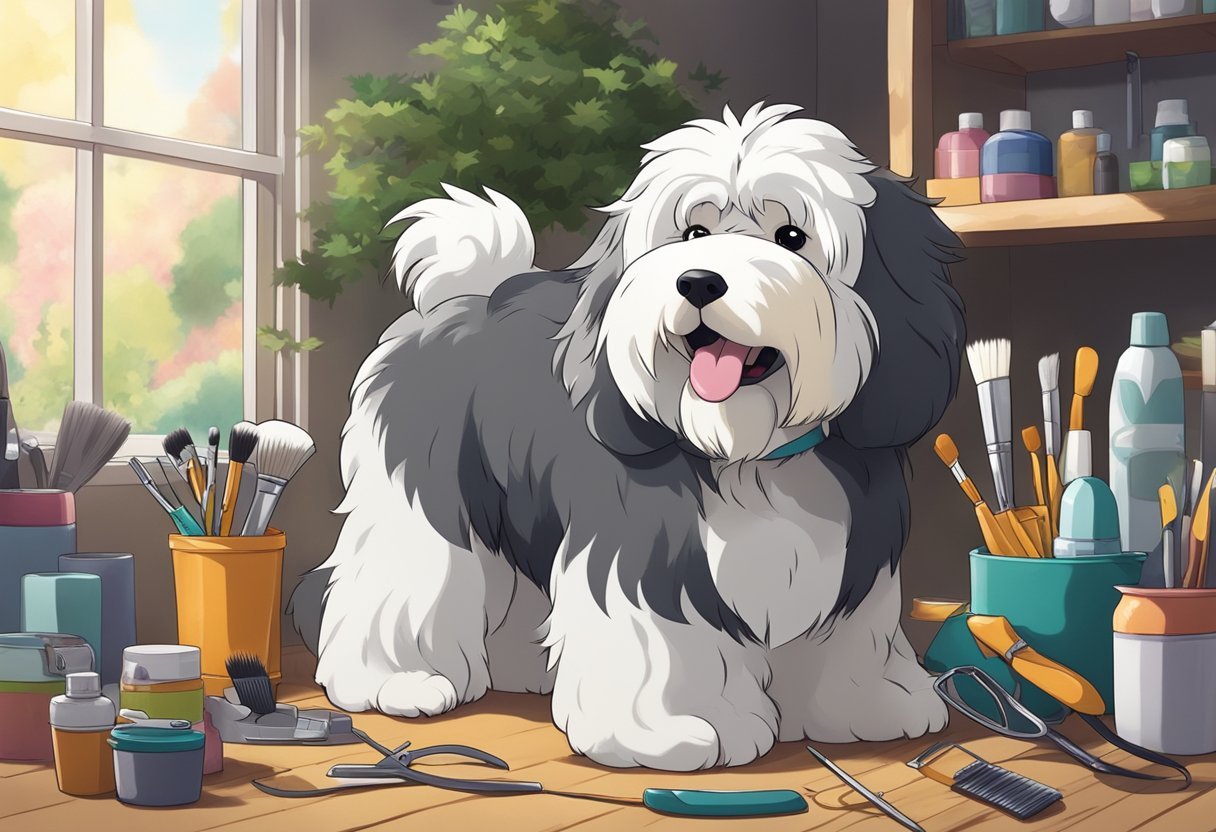
Caring for an Old English Sheepdog requires attention to their distinct fluffy double coat and maintaining their overall well-being through proper health practices and nutrition. Adequate grooming and care contribute significantly to their quality of life.
Coat Maintenance
Your Old English Sheepdog’s impressive double coat is one of their most defining features.
Regular brushing is essential to prevent tangles and mats that can quickly become uncomfortable for your dog.
It’s recommended to brush your Sheepdog thoroughly at least once a week with a suitable pin brush. For those shaggy coats, consider line brushing, a technique where you lift a layer of hair and brush the section underneath to ensure no part of the coat is missed.
Bathing your dog should be done every 4 to 8 weeks to keep their coat clean and healthy. However, it’s important to thoroughly dry their coat to avoid any potential skin issues.
Given the complexities associated with grooming your Old English Sheepdog, you might find it beneficial to schedule regular appointments with a professional groomer skilled in handling double coats.
Health and Nutrition
Your dog needs a diet that supports their active lifestyle and helps maintain a healthy, shiny coat.
Balance is key in their nutrition to prevent obesity, which can exacerbate certain health conditions common in the breed like hip dysplasia.
Regular check-ups can catch early signs of cataracts or deafness, ensuring your furry friend remains healthy for years to come.
Always pair a proper diet with regular exercise. Not only does it help fend off health issues, but it also reduces excessive shedding of their fluffy coat.
Annual vet visits are imperative to monitor for any health concerns, keeping your shaggy companion as sprightly and affectionate as ever.
Common Health Concerns
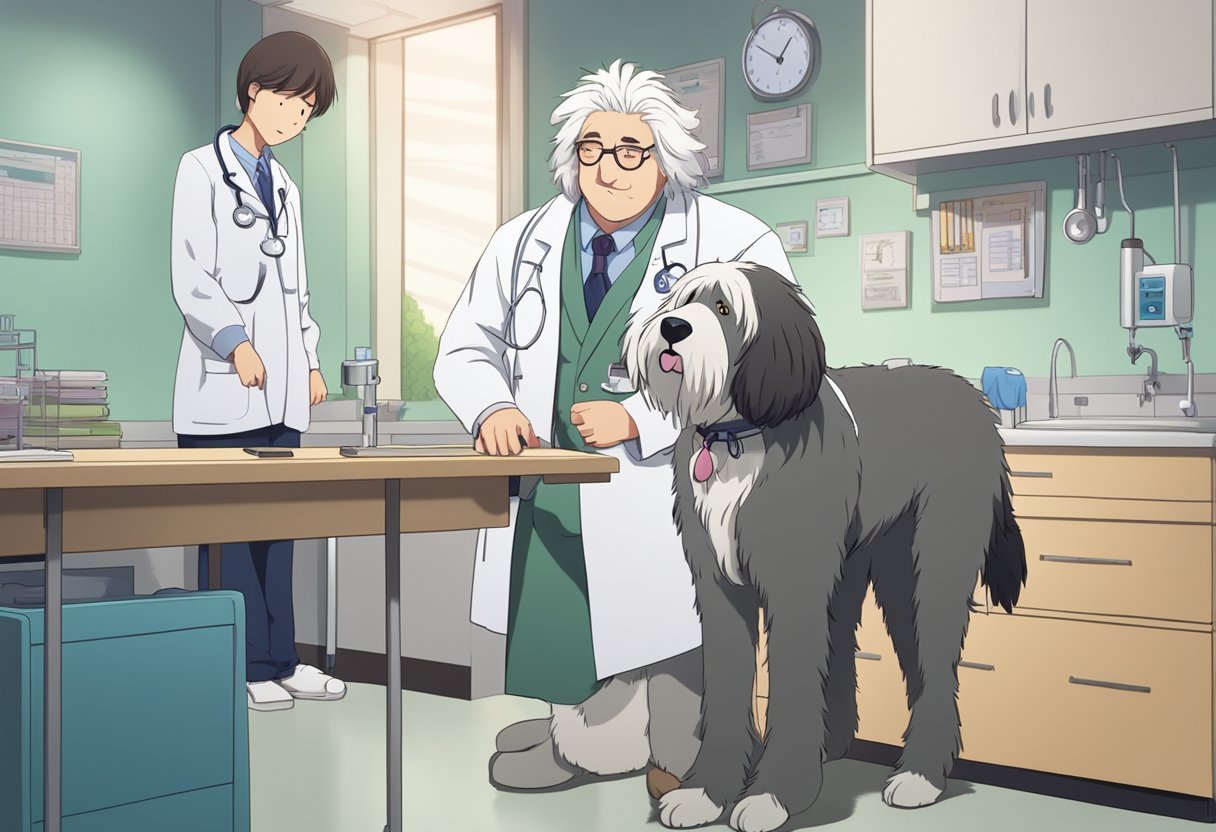
When you’re caring for your Old English Sheepdog, be aware of several health concerns that might affect your furry friend.
Routine vet check-ups can help maintain their overall wellness and catch any issues early.
Hip Dysplasia
Hip Dysplasia is a genetic condition often identified in this beloved breed.
It’s where the hip joint doesn’t fit together perfectly, which can lead to discomfort and limping.
Keep an eye on your dog’s movement and consult with your vet if you notice any issues, as early detection and management are key.
Eye Health
Your Old English Sheepdog’s big, expressive eyes are prone to several conditions like cataracts, which can impair vision.
It’s essential for dogs to have regular eye exams.
Alertness to changes in your dog’s eyes and vision can lead to early intervention and treatment.
General Wellness
Maintaining a healthy lifestyle is crucial for your Old English Sheepdog.
Regular check-ups with the vet, a balanced diet, and daily exercise are fundamental.
Be vigilant for signs of unusual behavior or symptoms as these can often hint at health issues such as deafness or other concerns that warrant professional attention.
Breeders and Adoption
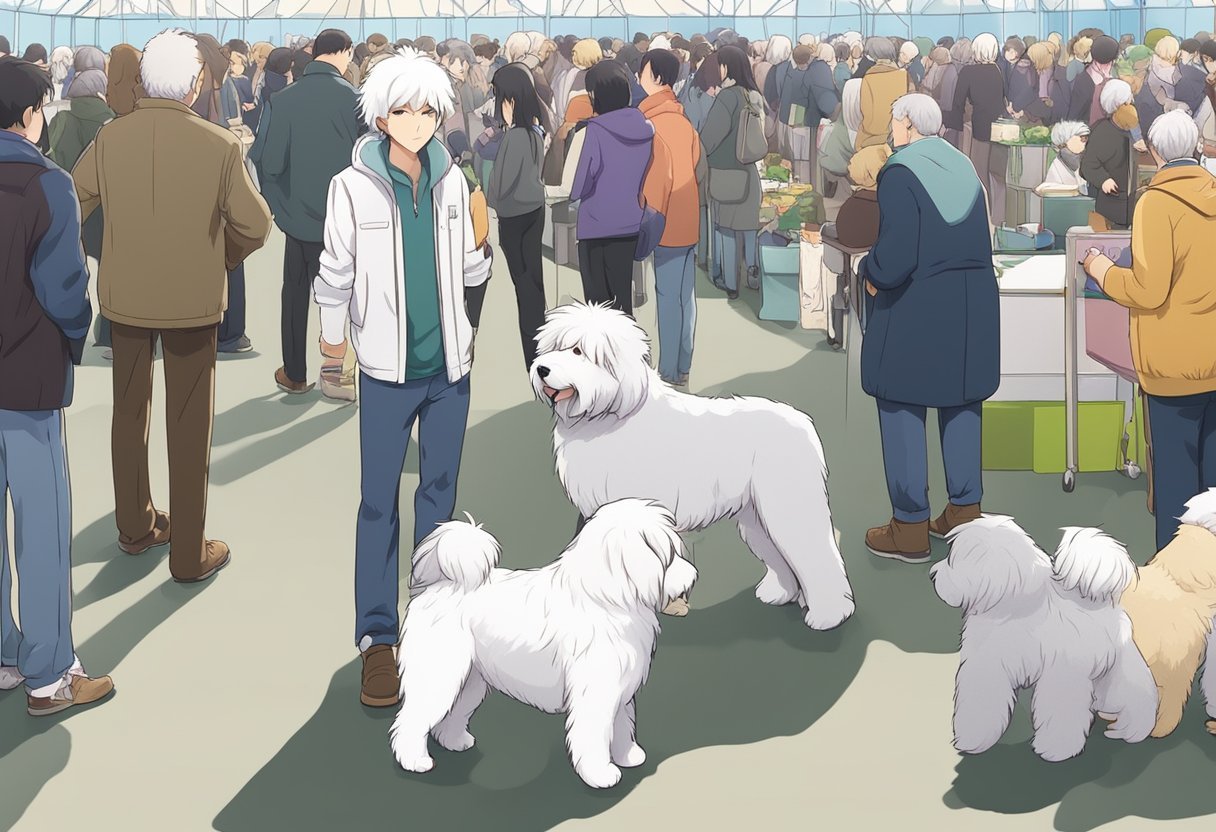
When considering adding an Old English Sheepdog to your family, you have two primary paths: purchasing from reputable breeders or opting for adoption.
Reputable breeders ensure the health and pedigree of your dog, while adoption can provide a home to a sheepdog in need.
Selecting a Reputable Breeder
To ensure you’re bringing home a healthy and well-socialized Old English Sheepdog, finding a reputable breeder is key.
Here are some tips:
- Check for Affiliations: Look for breeders associated with the Old English Sheepdog Club of America and registered with the American Kennel Club (AKC).
- Health Screenings: Confirm that the breeder provides health clearances for diseases the breed is prone to.
- Visit the Breeder: If possible, visit the breeder’s facility to see the conditions where the dogs are raised.
Reputable breeders should welcome your questions and provide comprehensive answers. They will also express interest in the type of home you’re offering.
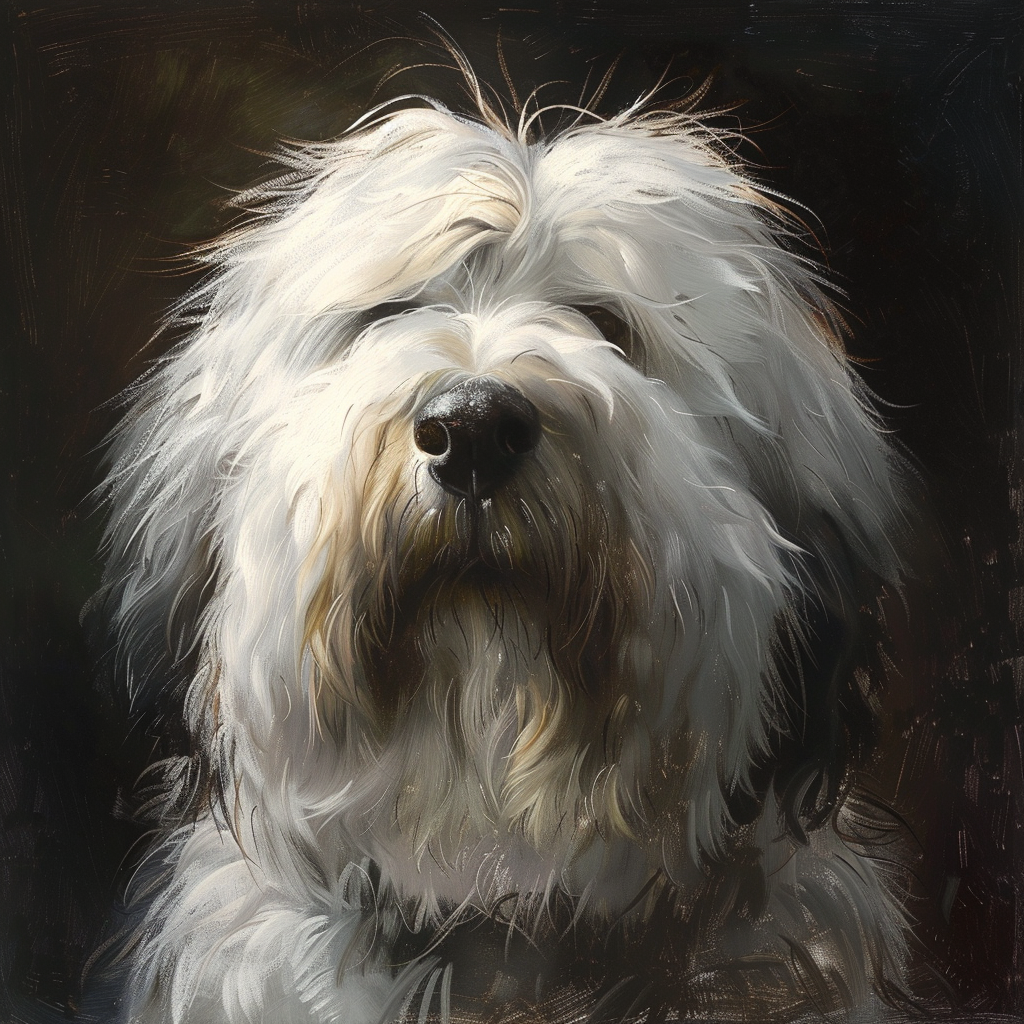
Adoption & Rescue Options
If you prefer giving a sheepdog a second chance, explore these options:
- Rescues:
- Old English Sheepdog Rescue specialize in this breed and understand their specific needs.
- Old English Sheepdog Club of America provides support and rehoming assistance for dogs in need.
- Shelters: Don’t overlook local shelters; they sometimes house this breed.
Adoption not only offers a sheepdog a loving home but often includes vaccinations, spaying/neutering, and sometimes microchipping.
Remember, whether you buy from a breeder or adopt, you’re making a long-term commitment to care for your new four-legged friend.


